The Epic Tales of the Valkyries in Norse Mythology
Venture into the mystical realm of Norse mythology as we delve deep into the captivating stories of the Valkyries. These fierce and powerful female warriors have been the subject of countless legends and tales, captivating the imaginations of people for centuries. From their origins and connections to gods and goddesses, to their noble duty of selecting fallen heroes and guiding them to Valhalla, the Valkyries are a symbol of strength, bravery, and divine intervention. We will explore their hierarchical structure, their supernatural abilities and weaponry, as well as their epic battles and heroic feats. Join us on this extraordinary journey as we uncover the stories of legendary Valkyries such as Brunhilde, Sigrun, Grimhild, and Gunnr. Discover the symbolism and significance of these valiant warriors in art, literature, and modern culture. Prepare to be enthralled by the enthralling tales of the Valkyries in Norse mythology.
Contents
- The Origins of Valkyries
- Valhalla and the Valkyries’ Duty
- Glorious Valkyrie Warriors
- Stories of the Valkyries
- Symbolism and Significance
- Conclusion
-
Frequently Asked Questions
- 1. How did the Valkyries choose which fallen heroes to take to Valhalla?
- 2. Were all Valkyries female warriors?
- 3. What role did the Valkyries play in Norse society?
- 4. Did Valkyries possess any special powers?
- 5. What was the significance of Valhalla in Norse mythology?
- 6. Were Valkyries ever worshipped as deities?
- 7. Were there famous historical figures believed to have been Valkyries?
- 8. Did Valkyries have a specific appearance or dress?
- 9. Was it possible for mortals to interact or communicate with Valkyries?
- 10. How are the Valkyries represented in modern culture today?
- References
-
Frequently Asked Questions
- 1. What does the word “Valkyrie” mean?
- 2. How many Valkyries are there in Norse mythology?
- 3. Are Valkyries exclusively female figures?
- 4. What purpose do Valkyries serve in Norse mythology?
- 5. Do Valkyries have any connection to Odin, the chief god of Norse mythology?
- 6. What powers do Valkyries possess?
- 7. Are there any famous stories or legends about specific Valkyries?
- 8. How are Valkyries represented in art and literature?
- 9. Is the concept of Valkyries still relevant in modern culture?
- 10. Can anyone become a Valkyrie?
- References
- Read More
The Origins of Valkyries
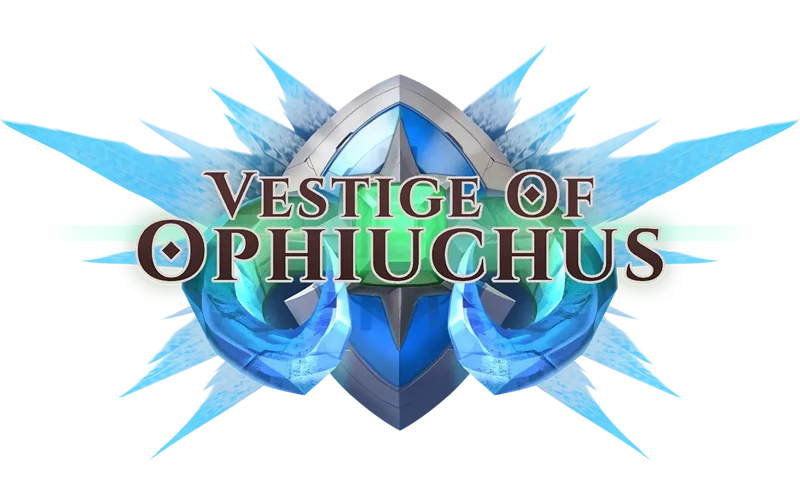
The Origins of Valkyries can be traced back to ancient Norse mythology, where they are believed to be divine beings who serve the gods. According to Norse legends, the Valkyries were born from the union of the god Odin and the giantess Gríðr. They were not only beautiful but also possessed incredible strength and skill in battle. It is said that these fierce warriors were chosen by Odin himself to assist in the selection of fallen heroes who would be taken to Valhalla. Some myths also suggest that the Valkyries may have been inspired by ancient warrior women from Nordic cultures. These warrior women were revered for their courage and prowess in battle, which likely influenced the portrayal of the Valkyries in Norse mythology. The Valkyries’ origin story is a testament to their extraordinary nature and their close connection to the gods. They are truly remarkable figures, embodying both grace and power in equal measure.
The role of Valkyries in Norse Mythology
The role of Valkyries in Norse Mythology is an integral one, as they were tasked with assisting the gods in the selection of fallen heroes and guiding them to their eternal resting place in Valhalla. These divine beings were entrusted with the responsibility of observing battles on Earth, carefully choosing warriors who displayed exceptional bravery, skill, and honor. The Valkyries would descend upon the battlefield, mounted on majestic horses, and identify those heroes destined for Valhalla. This role of the Valkyries was crucial in ensuring that only the most deserving warriors were granted the honor of dining and fighting alongside the gods in the halls of Valhalla. Some myths also state that the Valkyries had the power to alter the outcome of battles, favoring those deemed worthy of entry to the mighty hall. Thus, the role of Valkyries in Norse mythology is one of both judge and guide, ensuring that the valiant souls of fallen heroes are rightfully rewarded in the afterlife. Their significance and influence in the warrior culture of the Norse people cannot be overstated.
Their connection to the gods and goddesses
The Valkyries have a deep and significant connection to the gods and goddesses of Norse mythology. They are often considered as the handmaidens of Odin, the all-father and ruler of the gods. As his chosen warriors, the Valkyries serve alongside him in the heavenly realm. The association between the Valkyries and Odin is further strengthened by their role in selecting fallen warriors who would be granted entry into Valhalla, the great hall of Odin’s chosen heroes. This connection to Odin is marked by the Valknut, a symbol often associated with the Valkyries and Odin himself, representing their intertwined destinies. Additionally, the Valkyries are also closely linked to the goddess Freyja, who is known for her beauty, love, and fertility. It is believed that Freyja taught the Valkyries the magic arts and bestowed upon them the power to shape-shift, enhancing their abilities as formidable warriors. This connection to the divine pantheon underscores the significance and divine nature of the Valkyries in Norse mythology and the grand tapestry of gods and goddesses they are intertwined with.
Valhalla and the Valkyries’ Duty
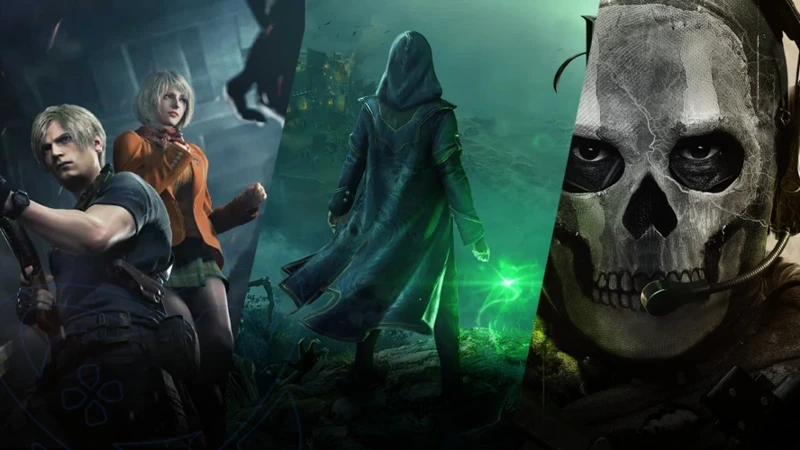
Valhalla, the great hall of the slain, stands as the ultimate reward for fallen heroes in Norse mythology. The duty of the Valkyries is to select these heroes from the battlefield and guide them to their eternal resting place in Valhalla. They are tasked with carefully observing each warrior and determining their valor and heroic deeds. Those deemed worthy are chosen to join the ranks of Odin’s chosen warriors, the Einherjar, in the great hall. It is said that the Valkyries ride their magnificent steeds across the battlefield, collecting the souls of the fallen with a sense of purpose and honor. This duty is not merely a responsibility, but an immense honor bestowed upon these divine warriors. The Valkyries’ role in escorting the fallen to Valhalla highlights their connection to the realm of the gods, as they become intermediaries between the mortal and divine realms. Their duty also symbolizes the importance of honor, courage, and valor in Norse society, emphasizing that those who die bravely in battle will be rewarded in the afterlife.
Selection of Fallen Heroes
In Norse mythology, the Valkyries had the sacred duty of selecting fallen heroes. They would ride into battle on their magnificent steeds, observing the fierce clashes below, and searching for those warriors who displayed exceptional bravery and skill. The chosen heroes would be deemed worthy of entering Valhalla, the great hall of Odin, where they would prepare for the final battle known as Ragnarok. The Valkyries possessed an acute sense of judgment, carefully scrutinizing the battlefield to identify the most valiant of warriors. Their selection process was not based solely on physical prowess, but also on the courage and spirit displayed by the fallen. Only those warriors who had demonstrated exceptional valor in battle would earn the honor of being chosen by the Valkyries. Being selected by these divine beings was considered the ultimate reward for a fallen warrior, a pathway to immortality and a place among the gods. The process of selecting fallen heroes by the Valkyries highlights their role as gatekeepers to the halls of the gods, ensuring that only the most deserving warriors would be granted entry into Valhalla, where they would await their destiny in the final battle of Ragnarok.
Guiding the Slain to Valhalla
Guiding the Slain to Valhalla is a crucial duty of the Valkyries in Norse mythology. After participating in a heroic battle, the Valkyries would descend upon the battlefield to select the worthy fallen warriors. It was their responsibility to determine who would be granted entry into Valhalla, the magnificent hall of the slain, ruled by Odin. The chosen warriors would be escorted by the Valkyries to their final resting place, where they would join the company of other esteemed heroes. The journey to Valhalla was often depicted as a spectacular spectacle, with the Valkyries riding on their swift horses and the fallen warriors following them. It was believed that the Valkyries would provide the fallen heroes with mead, the drink of the gods, to ensure their eternal satisfaction and pleasure in Valhalla. Their role as guides to Valhalla showcases the Valkyries’ connection to the afterlife and their significance in determining the fate of fallen warriors. The bond between the Valkyries and the fallen heroes is a testament to the honor and glory associated with these valiant warriors.
Glorious Valkyrie Warriors
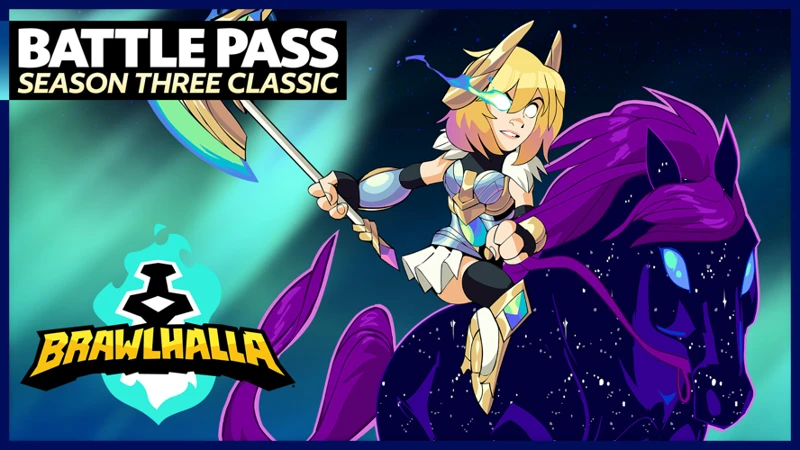
Glorious Valkyrie Warriors occupy a prominent place in Norse mythology, revered for their bravery and prowess in battle. These divine maidens form a hierarchical structure, with the Valkyrie Hierarchy being comprised of powerful individuals who serve the gods. At the top of this hierarchy is the chief Valkyrie, known as the Choosers of the Slain, who oversees the selection of fallen heroes bound for Valhalla. The other Valkyries, each with their unique names and characteristics, assist in this sacred duty. These valiant warriors possess divine abilities and are often depicted with mystical weapons such as spears, swords, and shields. Their precise combat skills and supernatural powers make them almost invincible on the battlefield. Stories and sagas recount their extraordinary battles and heroic feats, illustrating their unwavering dedication to their duty and their astonishing strength. The Valkyries’ mythical status and extraordinary abilities make them figures of awe and inspiration, demonstrating the epitome of warrior spirit and resilience.
The Valkyrie Hierarchy
The Valkyrie Hierarchy is a fascinating aspect of Norse mythology, providing insight into the organization and structure of these powerful warrior maidens. In Norse legends, it is believed that there are numerous Valkyries, each holding a specific rank and role within their divine order. The Valkyries are often portrayed as a sisterhood, led by a chief Valkyrie who holds the highest position of authority. This chief Valkyrie, known as the “Choosers of the Slain,” oversees the important task of selecting fallen warriors to be taken to Valhalla. While the exact number of Valkyries may vary in different sources, they are typically depicted as a group of powerful and awe-inspiring women. The hierarchy within the Valkyrie ranks is not clearly defined in Norse mythology, but it is believed that individual Valkyries may hold different roles or responsibilities based on their abilities and experience. The Valkyrie Hierarchy showcases the complexity and depth of these mythical figures, highlighting their significance in the realm of Norse deities and their importance in the afterlife of fallen heroes.
Divine Abilities and Weaponry
The Valkyries possess divine abilities and are equipped with formidable weaponry that sets them apart as exceptional warriors. These celestial maidens are known for their incredible speed and agility, allowing them to traverse battlefields with ease. Their keen senses enable them to perceive unseen threats and guide them in making strategic decisions. The Valkyries also possess the power of flight, soaring through the skies as they carry out their duties.
In terms of armament, the Valkyries are often depicted wielding spears and swords, which they skillfully wield in combat. These weapons, imbued with divine power, are said to never miss their mark and can strike down enemies with great precision. Their armor is said to be indestructible, providing them with protection and rendering them nearly invulnerable.
Additionally, the Valkyries have the ability to heal wounds and revive fallen warriors, showcasing their divine restorative powers. This gift not only aids the fallen heroes they select but also contributes to the eternal cycle of battle and glory. It is through these divine abilities and weaponry that the Valkyries establish themselves as indomitable forces on the battlefield, fulfilling their role as the choosers of the slain and guardians of the fallen warriors.
Battles and Heroic Feats
In the realm of Norse mythology, the Valkyries are renowned for their heroic feats and participation in epic battles. These formidable warriors displayed immense bravery, fearlessness, and skill on the battlefield. Clad in shining armor and wielding powerful weapons, they fought alongside the gods in conflicts against giants, monsters, and other forces of darkness. One notable battle where the Valkyries played a significant role was the final showdown of Ragnarok, the ultimate battle that marked the end of the world. It is said that during this cataclysmic event, the Valkyries fought valiantly, defending Asgard and its inhabitants from destruction. Their heroism and unwavering dedication to the gods and the mortal realm earned them a revered place in Norse mythology. These tales of their battles and heroic feats serve as a testament to their indomitable spirit and unwavering commitment to protect and uphold the realms of gods and humans alike.
Stories of the Valkyries

The stories of the Valkyries are filled with adventure, romance, and moments of great valor. One renowned Valkyrie is Brunhilde, known for her fearlessness and unwavering loyalty. In the epic tale of the Völsunga saga, Brunhilde defies the gods and sides with the mortal hero, Sigurd. Another captivating story revolves around Sigrun, a Valkyrie who falls in love with Helgi, a legendary warrior. Their love withstands death itself, as Sigrun defies the barriers between the living and the dead to be with her beloved. Grimhild is a Valkyrie known for her prophetic abilities. She weaves the threads of fate and guides the paths of heroes, shaping the outcome of battles. Finally, there is Gunnr, whose fury on the battlefield is unmatched. She embodies the raw power and strength of the Valkyries, striking fear into the hearts of her enemies. These tales of the Valkyries showcase their complex personalities, their unwavering dedication to their duties, and their profound impact on the mortal realm. They serve as reminders of the indomitable spirit of these mythical warrior women, who continue to inspire and captivate us to this day.
Brunhilde the Fearless
Brunhilde the Fearless is one of the most revered Valkyries in Norse mythology. She is known for her exceptional bravery, unwavering loyalty, and indomitable spirit. According to the legends, Brunhilde was not only a skilled warrior but also a wise and respected leader. She played a crucial role in the battles fought by the gods and served as a messenger between the mortal realm and the divine realm. Brunhilde’s name is synonymous with fearlessness and courage. She fearlessly rode into battle, wielding her powerful spear, and protected the chosen heroes with unwavering determination. In some variations of the myth, Brunhilde is depicted as a tragic figure who defied the gods and faced dire consequences for her actions. Her story serves as a reminder of the complexities of honor, duty, and the consequences of challenging divine powers. Brunhilde’s unwavering bravery and fierce loyalty continue to inspire countless tales of valor and heroism. Her legacy as a fearless Valkyrie has left an indelible mark on Norse mythology and serves as a shining example of courage in the face of adversity. The story of Brunhilde is a testament to the enduring power of the Valkyries in Norse mythology.
Sigrun and the Undying Love
In the realm of Norse mythology, the story of Sigrun and the Undying Love is a tale of devotion and sacrifice. Sigrun, a valiant Valkyrie, fell deeply in love with Helgi, a renowned warrior and prince. Their love grew amidst the chaos of battles and war, but tragedy struck when Helgi fell in combat. Heartbroken, Sigrun refused to accept his death and pleaded with Odin to reunite them. Moved by her unwavering love, Odin allowed Helgi to return to the world of the living in the form of a reincarnation. Their reunion brought joy to both Sigrun and Helgi. They lived a brief but blissful life together until Helgi faced his mortal end once again. Sigrun, devastated by the loss, chose to reject the afterlife in Valhalla and instead joined Helgi in the realm of the dead. This tale of undying love showcases the depth of emotion and loyalty found in the Valkyries, reinforcing their status as fearless warriors who were also capable of experiencing intense love and sacrifice. Sigrun and Helgi’s story serves as a testament to the enduring power of love, even in the face of death.
Grimhild the Prophecy Spinner
In the realm of Norse mythology, the Valkyrie known as Grimhild stands out as the Prophecy Spinner. She possesses an uncanny ability to see into the future and interpret the cosmic threads of destiny. Grimhild’s foresight and wisdom make her an invaluable asset to the gods and goddesses in their quests and struggles. Legend has it that Grimhild’s gift of prophecy was bestowed upon her by the goddess Freyja, who recognized her extraordinary potential. With her keen insight, Grimhild can unravel the intricate tapestry of fate and provide guidance to the gods and mortals alike. Her prophecies are often cryptic and filled with symbolism, leaving those who seek her counsel intrigued yet perplexed. Through her visionary abilities, Grimhild offers glimpses of what lies ahead, helping shape the outcomes of battles and decisions. Her role as the Prophecy Spinner adds another layer of mystique to the already captivating tales of the Valkyries in Norse mythology.
Gunnr and the Valkyries’ Fury
Gunnr is a renowned Valkyrie whose name translates to “battle” or “war” in Old Norse. She is often associated with the concept of fury, representing the intense and fierce nature of warfare. Described as a formidable warrior, Gunnr embodies the Valkyries’ fury in battle. With her strong and skilled presence on the battlefield, she selects fallen heroes who have demonstrated exceptional bravery and valor. It is said that Gunnr’s fury is a force to be reckoned with, as she unleashes her ferocious might upon her enemies. Her intense battle cries and formidable combat abilities strike fear into the hearts of her opponents. Gunnr’s role as a Valkyrie showcases the power and fierceness that these divine warriors possess. Through her actions, she highlights the unwavering dedication of the Valkyries to their duty of selecting fallen warriors and ensuring their place in the halls of Valhalla. The story of Gunnr and the Valkyries’ fury exemplifies their role as both formidable warriors and divine messengers of the gods. Their presence on the battlefield is an awe-inspiring sight, inspiring both fear and respect among mortals and gods alike.
Symbolism and Significance
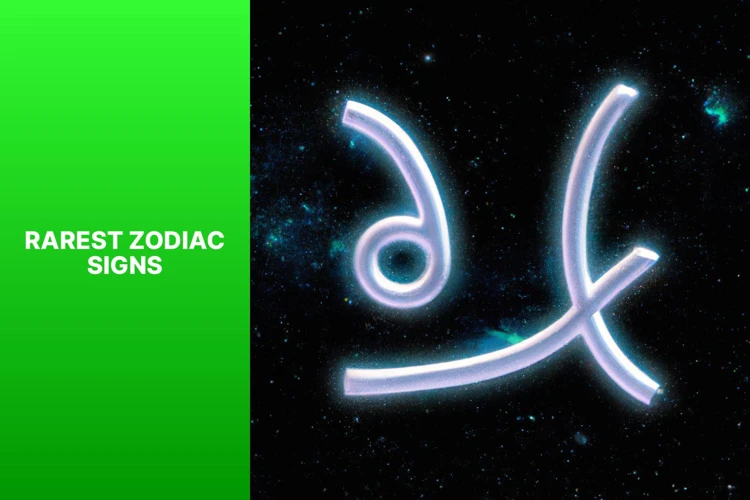
Symbolism and Significance are deeply intertwined with the Valkyries in Norse mythology. These mythical warriors embody various symbolic meanings that have captivated artists, writers, and enthusiasts throughout history. One prominent symbolism associated with the Valkyries is their representation of fate and destiny. As beings chosen by the gods to determine the fate of fallen heroes, they are seen as arbiters of life and death. Their ability to select warriors who would be granted entrance into Valhalla highlights the cyclical nature of life and the inevitability of death. Additionally, the Valkyries symbolize bravery, valor, and sacrifice. They are fierce warriors who fearlessly enter into battle and escort the souls of fallen warriors to their eternal reward. These qualities make them icons of courage and honor. The Valkyries also embody the duality of femininity and strength. They challenge traditional gender roles by being powerful warriors in their own right, defying societal expectations and inspiring empowerment. Their significance extends beyond Norse mythology, permeating art, literature, and modern culture. In various forms of artwork, the Valkyries are often depicted as beautiful, ethereal beings with wings, wielding spears and shields. Their portrayal in popular culture, such as in music and literature, continues to capture the imagination and intrigue of audiences worldwide. The symbolism and significance surrounding the Valkyries make them enduring and iconic figures in mythology and beyond.
Representations in Art and Literature
Representations of the Valkyries in art and literature have captivated audiences throughout history. In Norse art, they are often depicted as divine, ethereal beings, adorned in armor and armed with spears or swords. Their strong and graceful presence is conveyed through intricate details such as flowing hair, determined expressions, and majestic wings. These representations highlight the Valkyries’ role as fierce warriors and bring to life their connection to the gods. In literature, the Valkyries have been featured in various sagas and poems, showcasing their bravery and importance in Norse mythology. One prominent example is their appearance in the epic poem “The Song of the Valkyries,” where their valor in battle is celebrated. Their depiction in art and literature serves as a testament to their significant role as mythical figures and their enduring impact on Norse culture and storytelling. From ancient depictions to modern interpretations, the Valkyries continue to inspire and captivate artists and writers alike, perpetuating their timeless legacy.
Valkyries in Modern Culture
Valkyries in Modern Culture have become prominent figures that inspire various forms of art, literature, and entertainment. Their image of strong, independent female warriors has captivated the imagination of many. In literature, the Valkyries are often depicted as fierce heroines, showcasing their bravery and valor. They serve as symbols of empowerment and resilience, resonating with readers who admire their strength. In popular culture, Valkyries have made appearances in movies, television shows, and video games, becoming beloved characters known for their courage and fighting skills. Their influence extends beyond traditional media, as Valkyrie-inspired fashion and artwork have gained popularity, reflecting their enduring appeal in modern society. These representations of Valkyries not only pay homage to Norse mythology but also serve as a source of inspiration for those seeking to embody their warrior spirit. The presence of Valkyries in modern culture showcases the timelessness of their mythological significance and their ongoing impact on artistic expression and storytelling.
Conclusion
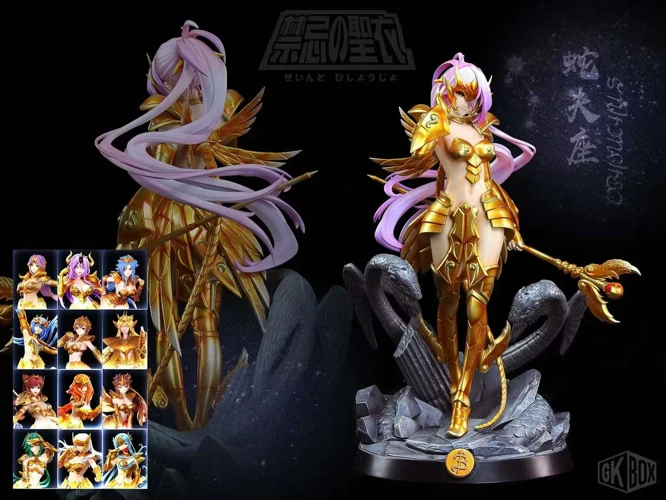
In conclusion, the tales of the Valkyries in Norse mythology are both captivating and inspiring. These fierce female warriors hold a significant place in the pantheon of Norse gods and goddesses. Their origins as the offspring of Odin and the giantess Gríðr, and their role in selecting fallen heroes and guiding them to Valhalla, showcase their divine connection and immense power. The Valkyries’ hierarchy, supernatural abilities, and remarkable weaponry further emphasize their status as formidable warriors. Their stories, such as those of Brunhilde, Sigrun, Grimhild, and Gunnr, continue to fascinate and enthrall audiences to this day. The symbolism surrounding the Valkyries is intricately woven into art, literature, and modern culture, making them a timeless and revered symbol of bravery and strength. By delving into the world of the Valkyries, we gain insight into a rich and vibrant mythological tradition that continues to captivate our imaginations. To explore more about self-discovery and personal growth, you can check out our article on using natal charts.
Frequently Asked Questions

1. How did the Valkyries choose which fallen heroes to take to Valhalla?
The Valkyries relied on their divine intuition and the will of the gods to guide their selection process. They would assess the bravery and valor of the fallen warriors, considering their deeds and accomplishments in battle.
2. Were all Valkyries female warriors?
Yes, in Norse mythology, all Valkyries were depicted as female warriors. They were renowned for their fearlessness and proficiency in combat.
3. What role did the Valkyries play in Norse society?
The Valkyries played a crucial role in Norse society as they were responsible for ensuring that fallen heroes were laid to rest in Valhalla. They were revered as divine beings and were seen as symbols of honor and glory.
4. Did Valkyries possess any special powers?
Yes, Valkyries possessed extraordinary powers bestowed upon them by the gods. They had the ability to heal wounds, shape-shift, and control the outcome of battles. Their supernatural abilities made them formidable adversaries.
5. What was the significance of Valhalla in Norse mythology?
Valhalla was the hall of the slain, a majestic realm where fallen heroes were welcomed by Odin. It was a place of eternal bliss and honor, where warriors prepared for the final battle of Ragnarök.
6. Were Valkyries ever worshipped as deities?
While Valkyries were not explicitly worshipped as deities, they were highly respected and held in awe by the Norse people. Their role in escorting fallen heroes to Valhalla elevated them to divine status.
7. Were there famous historical figures believed to have been Valkyries?
There are no known historical figures who were specifically believed to have been Valkyries. However, the legend of the Valkyries may have been inspired by the valiant women warriors of Norse cultures.
8. Did Valkyries have a specific appearance or dress?
Valkyries were often depicted as beautiful and radiant, with flowing hair and adorned in armor. They were seen as ethereal beings that exuded both power and grace.
9. Was it possible for mortals to interact or communicate with Valkyries?
In Norse mythology, mortals did not have direct interaction or communication with Valkyries. They were considered otherworldly beings who existed on a different plane of existence.
10. How are the Valkyries represented in modern culture today?
The Valkyries continue to captivate popular culture, often appearing in books, movies, and video games. They are depicted as fierce and independent warrior women, embodying strength and bravery.
References
Frequently Asked Questions

1. What does the word “Valkyrie” mean?
The word “Valkyrie” derives from Old Norse, with “valr” meaning “the slain” and “kyrja” meaning “to choose.” Valkyries can be understood as “the choosers of the slain.”
2. How many Valkyries are there in Norse mythology?
The exact number of Valkyries varies in different sources, but it is believed that there are usually twelve Valkyries who serve the gods and aid in the choosing of fallen warriors for Valhalla.
3. Are Valkyries exclusively female figures?
Yes, Valkyries are typically depicted as female figures in Norse mythology. They embody both beauty and great strength, defying traditional gender roles and expectations.
4. What purpose do Valkyries serve in Norse mythology?
Valkyries serve the gods by selecting courageous warriors who have died in battle and bringing them to Valhalla, the great hall of the slain heroes, where they will prepare for the final battle, Ragnarok.
5. Do Valkyries have any connection to Odin, the chief god of Norse mythology?
Yes, Valkyries are closely associated with Odin, as he is often depicted as their leader. They serve him faithfully and carry out his commands in battle.
6. What powers do Valkyries possess?
Valkyries are bestowed with divine abilities, including the power to shape-shift, heal wounds, and control the outcome of battles. They are fierce warriors themselves and are skilled in combat.
7. Are there any famous stories or legends about specific Valkyries?
Yes, there are several noteworthy tales featuring Valkyrie characters, such as the fearless Brunhilde, the tragic love story of Sigrun, the prophecy spinner Grimhild, and the fury demonstrated by Gunnr and her fellow Valkyries.
8. How are Valkyries represented in art and literature?
Valkyries are often depicted as radiant and powerful warrior maidens with flowing hair and armor. They are frequently shown riding on horses or flying through the air, carrying their chosen heroes to Valhalla.
9. Is the concept of Valkyries still relevant in modern culture?
Yes, the concept of Valkyries continues to captivate and inspire modern audiences. They appear in various forms of media, such as literature, movies, video games, and even in popular music.
10. Can anyone become a Valkyrie?
In Norse mythology, Valkyries are typically divine beings. However, there are some accounts that suggest ordinary mortal women, upon their death, could potentially be chosen to become Valkyries and serve in Odin’s army.
References
- The Bold and Beautiful Valkyries and Their Mortal Lovers
- Valkyries Mythology Stories Explained
- Valkyrie







